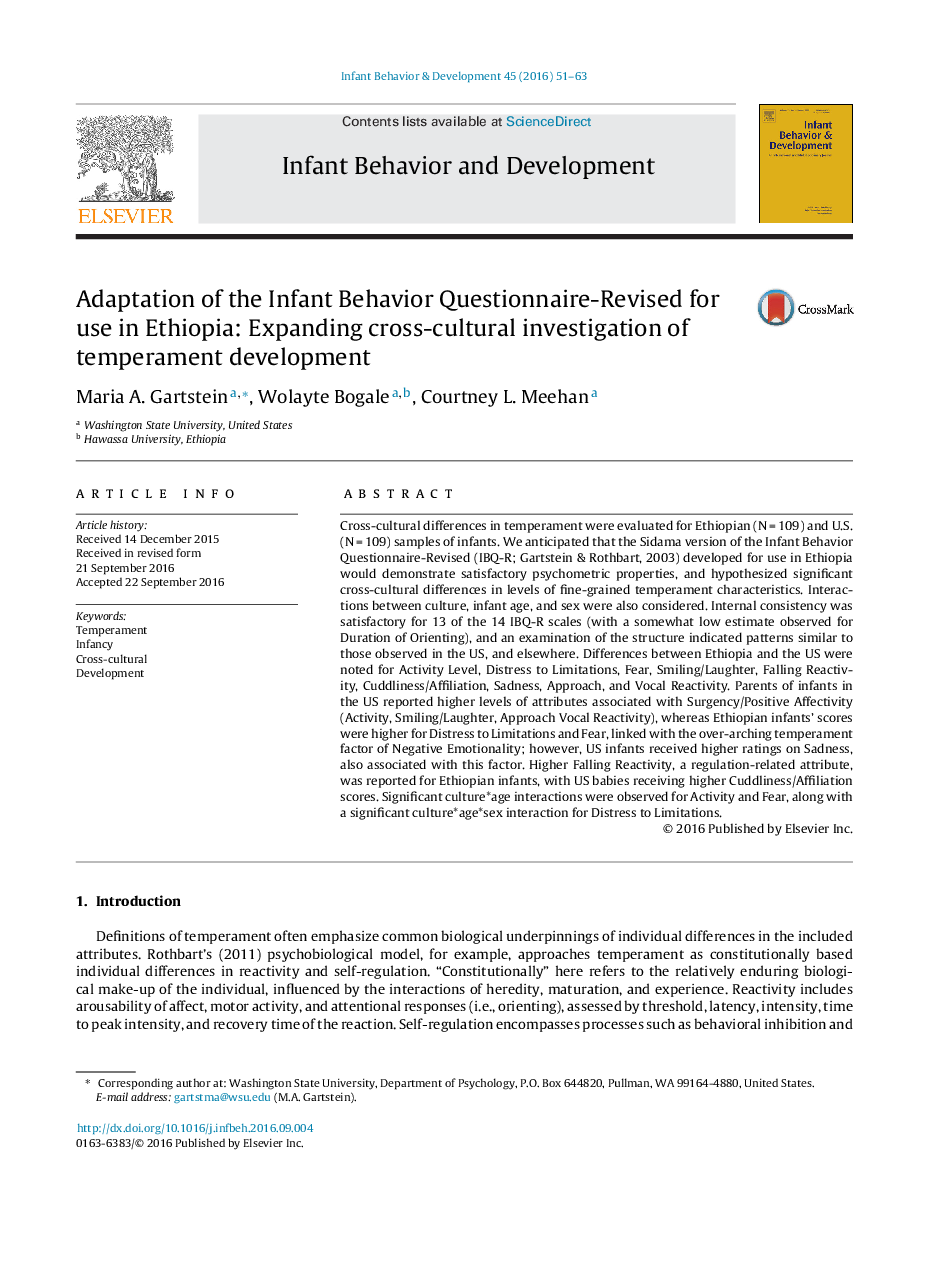| Article ID | Journal | Published Year | Pages | File Type |
|---|---|---|---|---|
| 10998045 | Infant Behavior and Development | 2016 | 13 Pages |
Abstract
Cross-cultural differences in temperament were evaluated for Ethiopian (NÂ =Â 109) and U.S. (NÂ =Â 109) samples of infants. We anticipated that the Sidama version of the Infant Behavior Questionnaire-Revised (IBQ-R; Gartstein & Rothbart, 2003) developed for use in Ethiopia would demonstrate satisfactory psychometric properties, and hypothesized significant cross-cultural differences in levels of fine-grained temperament characteristics. Interactions between culture, infant age, and sex were also considered. Internal consistency was satisfactory for 13 of the 14 IBQ-R scales (with a somewhat low estimate observed for Duration of Orienting), and an examination of the structure indicated patterns similar to those observed in the US, and elsewhere. Differences between Ethiopia and the US were noted for Activity Level, Distress to Limitations, Fear, Smiling/Laughter, Falling Reactivity, Cuddliness/Affiliation, Sadness, Approach, and Vocal Reactivity. Parents of infants in the US reported higher levels of attributes associated with Surgency/Positive Affectivity (Activity, Smiling/Laughter, Approach Vocal Reactivity), whereas Ethiopian infants' scores were higher for Distress to Limitations and Fear, linked with the over-arching temperament factor of Negative Emotionality; however, US infants received higher ratings on Sadness, also associated with this factor. Higher Falling Reactivity, a regulation-related attribute, was reported for Ethiopian infants, with US babies receiving higher Cuddliness/Affiliation scores. Significant culture*age interactions were observed for Activity and Fear, along with a significant culture*age*sex interaction for Distress to Limitations.
Related Topics
Life Sciences
Neuroscience
Behavioral Neuroscience
Authors
Maria A. Gartstein, Wolayte Bogale, Courtney L. Meehan,
